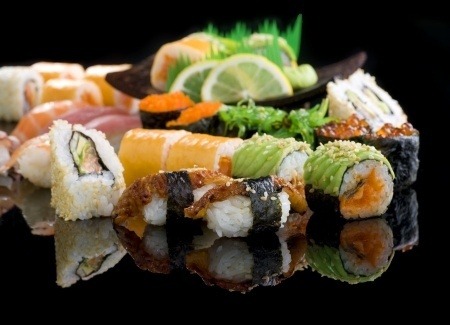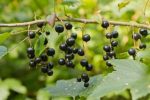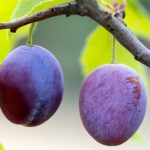
- Wasabi (Wasabia japonica Matsum.) is a highly pungent condiment for use with sushi and one of my favourite flavours for the effect it has on the nose.
- A member of the Brassicaceae family, usually called the mustard family.
- Native to Japan where it grows in cool mountain streams and pools. Prefers shade. It is not easy to cultivate because of its specific growing habits !
History
Wasabi was first known of in Japan going back 1,400 years according to stories written on wooden plates. It’s importance was such that in ancient times and according to Japan’s oldest law code known as the Taiho ritsuryo, one of the concessions was for citizens to pay a tithe (a type of tax) which was some of their harvest of wasabi.
Appearance
Wasabi is mainly grown for its pungent tasting stems which grow to between 2 to 4 inches in diameter and 6 to 12 inches in length.
Aroma And Flavour
Freshly grated wasabi has a pungent characteristic aroma which is also sweet, fruity, green and creamy in impact. The flavour is equally impacting offering a spiciness not found even with other condiments. It is often adulterated by unscrupulous dealers who mix mustard and horseradish with copper compounds to get the green colour and recreate this much loved food.
Researchers examined the wasabi aroma concentrate using aroma extract dilution (AED) analysis (Nakanishi et al., 2014). Ten odorants were detected as odour-active compounds at the highest flavour dilution factors of 256 and 1024. They were in order:- 3-methyl-2-butene-1-thiol, allyl isothiocyanate, (Z)-1,5-octadien-3-one, 2-isopropyl-3-methoxypyrazine, 4-pentenyl isothiocyanate, 5-hexenyl isothiocyanate, 3-methyl-2,4-nonanedione, cis-3-methyl-4-decanolide, 6-(methylthio)hexyl isothiocyanate, and vanillin. Amongst them, (Z)-1,5-octadien-3-one and cis-3-methyl-4-decanolide were identified for the first time in wasabi. To determine the absolute stereochemistry of cis-3-methyl-4-decanolide in wasabi, the researchers synthesized the stereoisomers of 3-methyl-4-decanolide from optically active γ-decalactone. They determined the absolute configurations of cis-3-methyl-4-decanolide as (3R,4R)-3-methyl-4-decanolide by matching the retention time and odour qualities in chiral gas chromatography GC-MS – a clever piece of research.
Components
Like many members of its family, it contains plenty of antioxidants especially isothiocyanates which have been associated with numerous health benefits.
Reference
Nakanishi A., , , , and (2014), Determination of the absolute configuration of a novel odour-active lactone, cis-3-methyl-4-decanolide, in wasabi (Wasabia japonica Matsum.), Flavour Fragr. J, 29 pp. 220–227. DOI: 10.1002/ffj.3196


Have you tried the Yutaka wasabi paste ? It is e***ing unbelievable ! It is more spicy than wasabi could ever be. I love it and I use it more than mustard – just incredible.